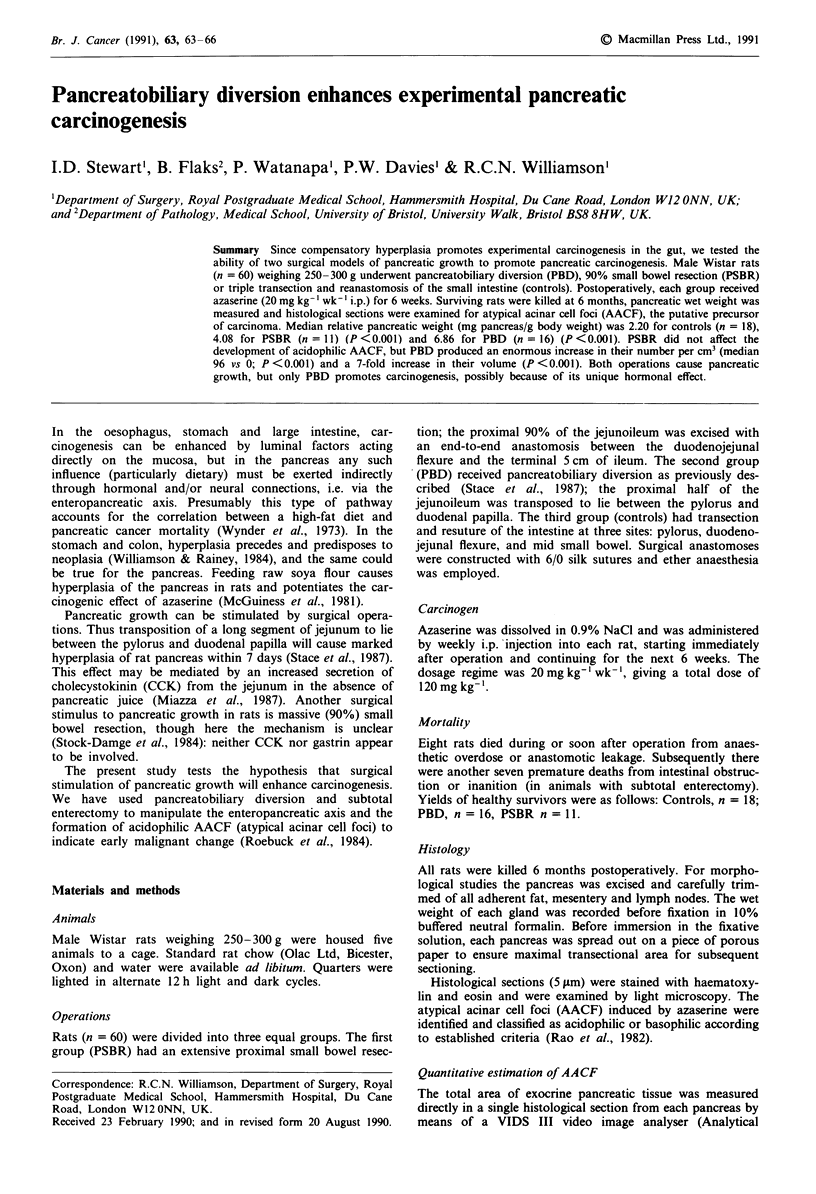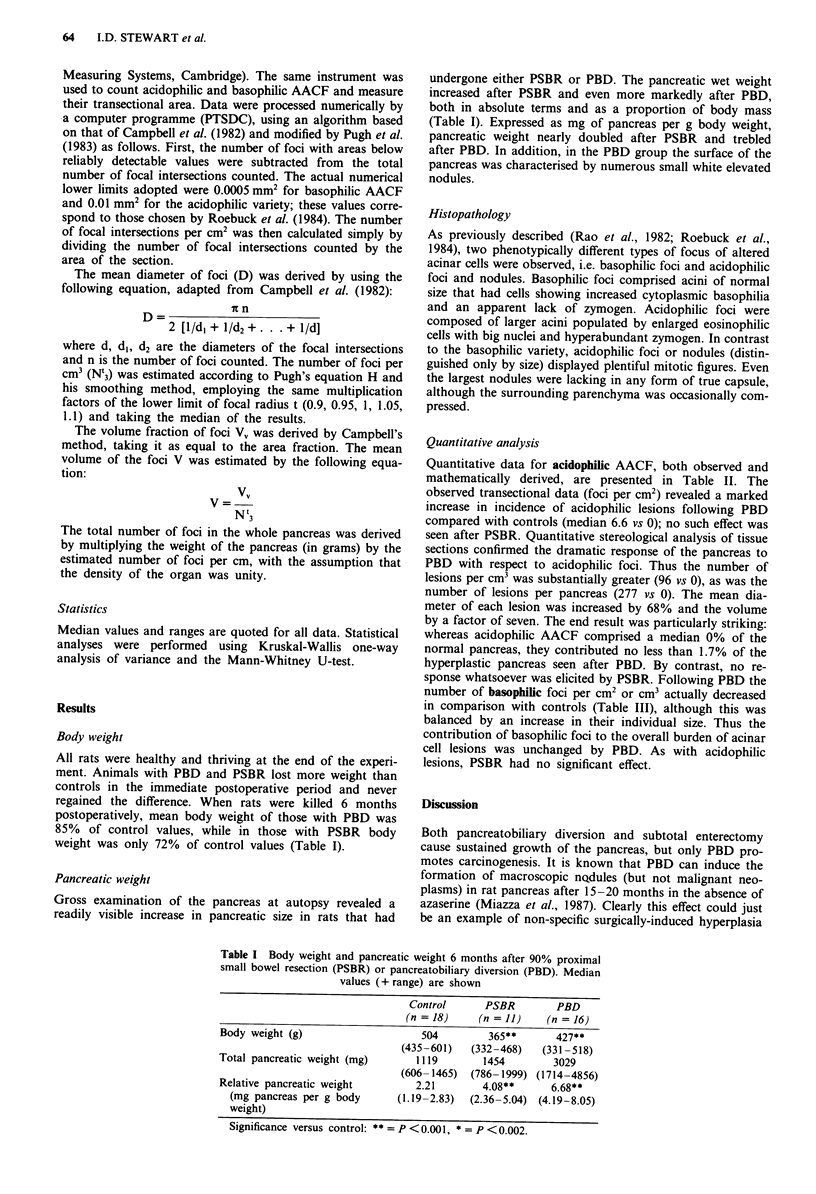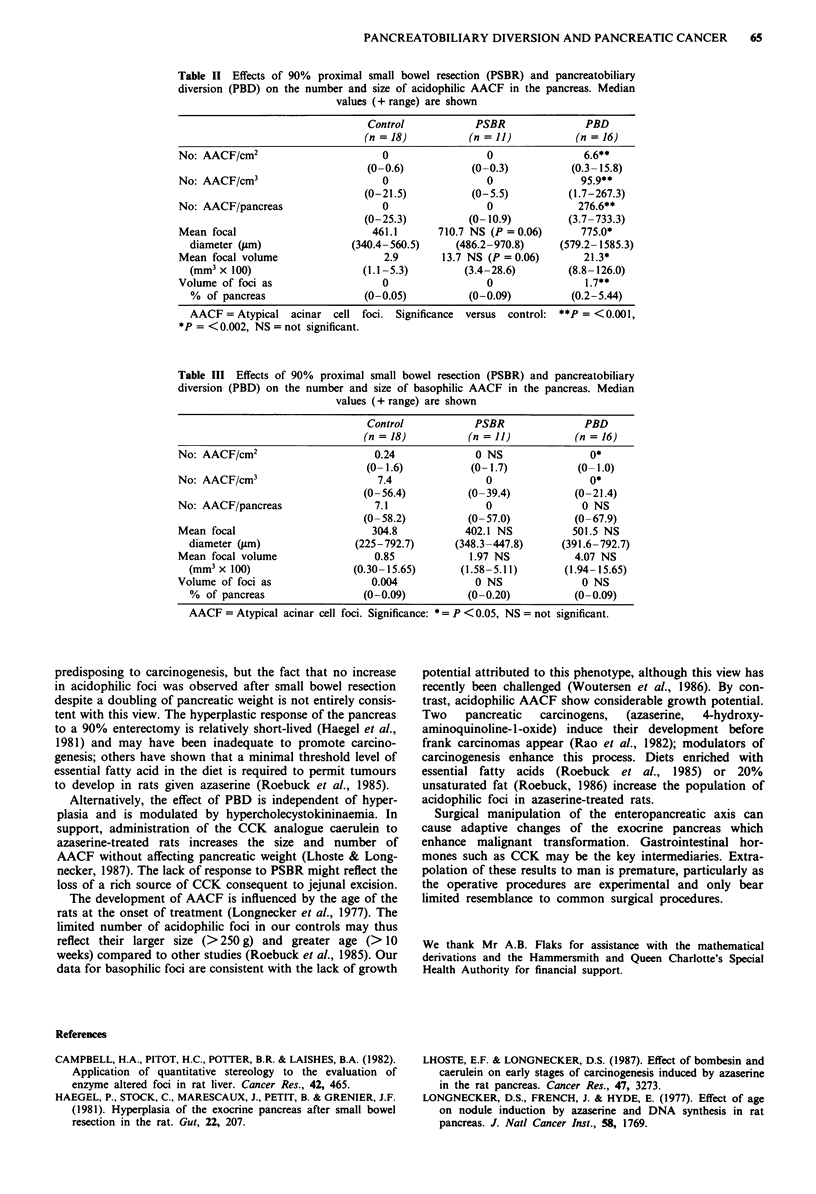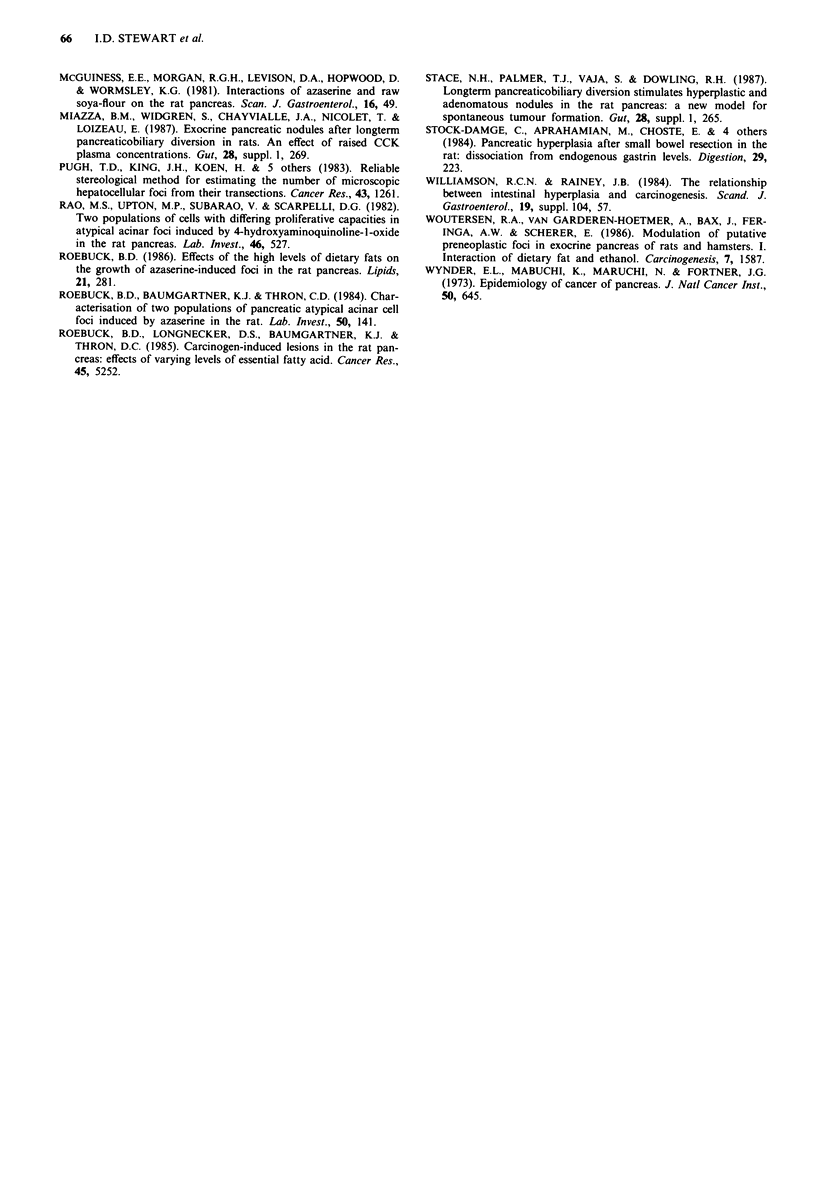Abstract
Since compensatory hyperplasia promotes experimental carcinogenesis in the gut, we tested the ability of two surgical models of pancreatic growth to promote pancreatic carcinogenesis. Male Wistar rats (n = 60) weighing 250-300 g underwent pancreatobiliary diversion (PBD), 90% small bowel resection (PSBR) or triple transection and reanastomosis of the small intestine (controls). Postoperatively, each group received azaserine (20 mg kg-1 wk-1 i.p.) for 6 weeks. Surviving rats were killed at 6 months, pancreatic wet weight was measured and histological sections were examined for atypical acinar cell foci (AACF), the putative precursor of carcinoma. Median relative pancreatic weight (mg pancreas/g body weight) was 2.20 for controls (n = 18), 4.08 for PSBR (n = 11) (P less than 0.001) and 6.86 for PBD (n = 16) (P less than 0.001). PSBR did not affect the development of acidophilic AACF, but PBD produced an enormous increase in their number per cm3 (median 96 vs. 0; P less than 0.001) and a 7-fold increase in their volume (P less than 0.001). Both operations cause pancreatic growth, but only PBD promotes carcinogenesis, possibly because of its unique hormonal effect.
Full text
PDF



Selected References
These references are in PubMed. This may not be the complete list of references from this article.
- Campbell H. A., Pitot H. C., Potter V. R., Laishes B. A. Application of quantitative stereology to the evaluation of enzyme-altered foci in rat liver. Cancer Res. 1982 Feb;42(2):465–472. [PubMed] [Google Scholar]
- Haegel P., Stock C., Marescaux J., Petit B., Grenier J. F. Hyperplasia of the exocrine pancreas after small bowel resection in the rat. Gut. 1981 Mar;22(3):207–212. doi: 10.1136/gut.22.3.207. [DOI] [PMC free article] [PubMed] [Google Scholar]
- Lhoste E. F., Longnecker D. S. Effect of bombesin and caerulein on early stages of carcinogenesis induced by azaserine in the rat pancreas. Cancer Res. 1987 Jun 15;47(12):3273–3277. [PubMed] [Google Scholar]
- Longnecker D. S., French J., Hyde E., Lilja H. S., Yager J. D., Jr Effect of age on nodule induction by azaserine and DNA synthesis in rat pancreas. J Natl Cancer Inst. 1977 Jun;58(6):1769–1775. doi: 10.1093/jnci/58.6.1769. [DOI] [PubMed] [Google Scholar]
- McGuinness E. E., Morgan R. G., Levison D. A., Hopwood D., Wormsley K. G. Interaction of azaserine and raw soya flour on the rat pancreas. Scand J Gastroenterol. 1981;16(1):49–56. [PubMed] [Google Scholar]
- Miazza B. M., Widgren S., Chayvialle J. A., Nicolet T., Loizeau E. Exocrine pancreatic nodules after longterm pancreaticobiliary diversion in rats. An effect of raised CCK plasma concentrations. Gut. 1987;28 (Suppl):269–273. doi: 10.1136/gut.28.suppl.269. [DOI] [PMC free article] [PubMed] [Google Scholar]
- Pugh T. D., King J. H., Koen H., Nychka D., Chover J., Wahba G., He Y. H., Goldfarb S. Reliable stereological method for estimating the number of microscopic hepatocellular foci from their transections. Cancer Res. 1983 Mar;43(3):1261–1268. [PubMed] [Google Scholar]
- Rao M. S., Upton M. P., Subbarao V., Scarpelli D. G. Two populations of cells with differing proliferative capacities in atypical acinar cell foci induced by 4-hydroxyaminoquinoline-1-oxide in the rat pancreas. Lab Invest. 1982 May;46(5):527–534. [PubMed] [Google Scholar]
- Roebuck B. D., Baumgartner K. J., Thron C. D. Characterization of two populations of pancreatic atypical acinar cell foci induced by azaserine in the rat. Lab Invest. 1984 Feb;50(2):141–146. [PubMed] [Google Scholar]
- Roebuck B. D. Effects of high levels of dietary fats on the growth of azaserine-induced foci in the rat pancreas. Lipids. 1986 Apr;21(4):281–284. doi: 10.1007/BF02536413. [DOI] [PubMed] [Google Scholar]
- Roebuck B. D., Longnecker D. S., Baumgartner K. J., Thron C. D. Carcinogen-induced lesions in the rat pancreas: effects of varying levels of essential fatty acid. Cancer Res. 1985 Nov;45(11 Pt 1):5252–5256. [PubMed] [Google Scholar]
- Stace N. H., Palmer T. J., Vaja S., Dowling R. H. Longterm pancreaticobiliary diversion stimulates hyperplastic and adenomatous nodules in the rat pancreas: a new model for spontaneous tumour formation. Gut. 1987;28 (Suppl):265–268. doi: 10.1136/gut.28.suppl.265. [DOI] [PMC free article] [PubMed] [Google Scholar]
- Stock-Damgé C., Aprahamian M., Lhoste E., Pousse A., Humbert W., Noriega R., Grenier J. F. Pancreatic hyperplasia after small bowel resection in the rat: dissociation from endogenous gastrin levels. Digestion. 1984;29(4):223–230. doi: 10.1159/000199037. [DOI] [PubMed] [Google Scholar]
- Woutersen R. A., van Garderen-Hoetmer A., Bax J., Feringa A. W., Scherer E. Modulation of putative preneoplastic foci in exocrine pancreas of rats and hamsters. I. Interaction of dietary fat and ethanol. Carcinogenesis. 1986 Sep;7(9):1587–1593. doi: 10.1093/carcin/7.9.1587. [DOI] [PubMed] [Google Scholar]
- Wynder E. L., Mabuchi K., Maruchi N., Fortner J. G. Epidemiology of cancer of the pancreas. J Natl Cancer Inst. 1973 Mar;50(3):645–667. doi: 10.1093/jnci/50.3.645. [DOI] [PubMed] [Google Scholar]


